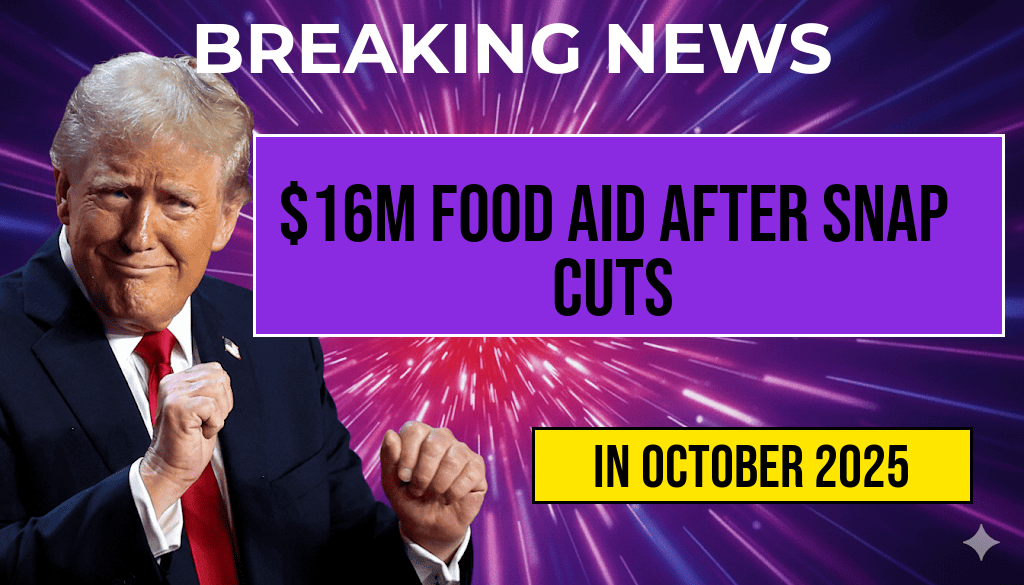In response to recent reductions in the Supplemental Nutrition Assistance Program (SNAP) benefits initiated during the Trump administration, federal and state agencies are allocating approximately $16 million to bolster food assistance efforts across vulnerable communities. This allocation aims to mitigate the financial strain on households facing decreased monthly benefits, ensuring continued access to essential nutrition amid ongoing economic challenges. The funding is part of a broader initiative to provide targeted support, particularly in regions most affected by the benefit cuts, which have drawn criticism from advocacy groups and policymakers alike. As the federal government navigates debates over social safety net programs, this infusion of resources underscores efforts to address food insecurity and stabilize the well-being of millions of Americans during uncertain times.
Background on SNAP Benefit Reductions
The recent reductions in SNAP benefits trace back to policy adjustments made during the Trump administration, which aimed to tighten eligibility criteria and curb federal expenditures. These changes, implemented in 2019 and 2020, resulted in an average decrease of approximately 5% to 10% in monthly benefits for millions of recipients nationwide. Critics argue that these cuts disproportionately impacted low-income families, seniors, and individuals with disabilities, exacerbating existing food insecurity issues. The SNAP program remains a critical component of the federal safety net, yet policy shifts continue to influence its reach and effectiveness.
Allocation Details and Distribution Strategy
| Region | Amount Allocated | Targeted Communities |
|---|---|---|
| Southern States | $6 million | High poverty zones, rural communities |
| Midwestern States | $4 million | Urban centers with high unemployment rates |
| Western States | $3 million | Native American reservations, border regions |
| Northeastern States | $3 million | Low-income urban neighborhoods |
The funds are being distributed through a combination of federal grants and state-level initiatives, emphasizing local partnerships with food banks, community organizations, and social service agencies. The primary goal is to provide immediate relief by increasing access to nutritious foods and supporting emergency food programs that have seen rising demand since the benefit reductions took effect.
Community Response and Impact
Many community leaders and advocacy groups have welcomed the additional funding, viewing it as a necessary stopgap to address the fallout from federal policy changes. Food banks across the country report a surge in demand, with some facilities experiencing up to 30% more visitors compared to last year. Feeding America estimates that food insecurity affected over 38 million Americans in 2022, a figure that is expected to rise amid ongoing economic pressures.
- Local organizations are deploying mobile food pantries to reach rural and underserved populations.
- State agencies are increasing outreach efforts to ensure eligible households are aware of available assistance programs.
- Community advocates emphasize the importance of sustainable solutions beyond emergency aid, including employment programs and affordable housing initiatives.
Policy Reactions and Future Outlook
Political reactions to the funding infusion have been mixed. Supporters highlight the necessity of safeguarding vulnerable populations from heightened food insecurity, especially as inflation continues to impact food prices. Conversely, critics argue that federal resources should focus on addressing the root causes of poverty rather than temporary relief measures. The Biden administration has indicated a willingness to revisit SNAP policies and explore options for expanding access, with some lawmakers proposing legislation to reverse or modify recent reductions.
As debates continue in Congress over the future of social safety net programs, the current $16 million effort represents a targeted attempt to cushion the blow for those most affected by recent policy shifts. Experts warn that without systemic reforms, reliance on emergency funding may become a recurring necessity. Meanwhile, community organizations remain on the frontlines, working tirelessly to ensure that no family has to choose between paying for food or other essentials during these challenging times. For more insights on SNAP policies and food insecurity trends, visit USDA Food and Nutrition Service.
Frequently Asked Questions
What is the purpose of the $16 million allocation for food assistance?
The $16 million is allocated to provide food assistance to individuals and families affected by the recent SNAP reductions implemented during the Trump administration.
Who is eligible for the food assistance funded by this allocation?
Eligible recipients include low-income individuals and families who experienced a decrease in SNAP benefits due to policy changes, ensuring they continue to receive necessary food support.
How do the recent SNAP reductions impact recipients?
The SNAP reductions led to a decrease in monthly benefits for many recipients, making it more challenging for them to afford nutritious food. The new funding aims to mitigate these effects.
When will the food assistance funds be available to those in need?
The funds are expected to be distributed starting immediately, with various programs and initiatives in place to ensure quick access for eligible recipients.
What measures are in place to ensure the effective use of the $16 million for food assistance?
Authorities will implement rigorous oversight and monitoring to ensure the funds are effectively distributed and used to support those most in need.






